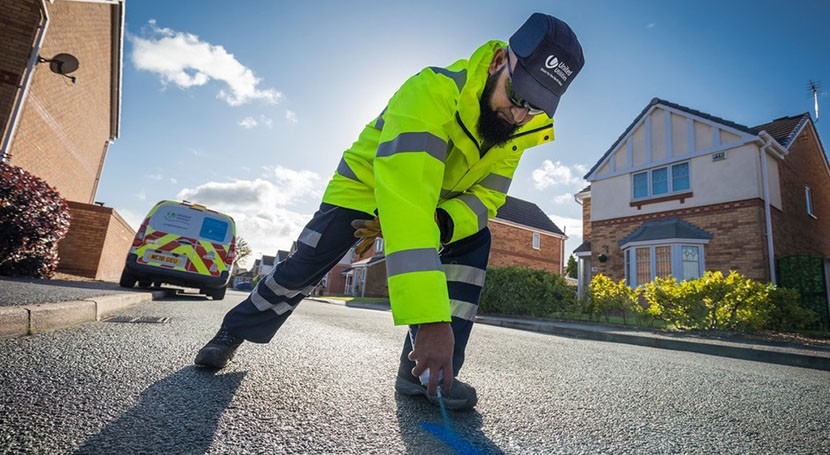Innovative Solutions for Very Early Discovery of Water Leaks in Structures and Facilities
As the integrity of structures and infrastructure is critical, the difficulty of early detection of water leakages has actually spurred ingenious solutions that guarantee to revolutionize the way we secure versus potential damages. From innovative leakage detection technologies to the deployment of IoT sensors for real-time monitoring, the landscape of leak avoidance is advancing swiftly. Artificial intelligence algorithms use a glimpse into the future of leak prediction, while thermal imaging provides a non-intrusive technique for determining covert leakages. Automated water circulation analysis systems are reshaping exactly how leakages are recognized and dealt with, leading the way for a positive strategy to water leakage detection. Each of these services holds the crucial to making certain the dependability and long life of our built environment, prompting a shift towards a much more sustainable and effective future.
Advanced Leak Detection Technologies
Advanced leak detection innovations, furnished with sophisticated sensing units and formulas, play a crucial role in swiftly identifying and pinpointing water leakages in numerous setups. These innovations employ a combination of acoustic, thermal, and electro-magnetic sensing methods to detect leakages accurately. Acoustic sensing units identify the noise of leaving water, permitting accurate localization of the leak resource. Thermal imaging discovers temperature level modifications caused by water leak, supplying one more effective approach for leak recognition. Electromagnetic sensing units can determine changes in magnetic fields brought on by water, supplying yet one more layer of leakage detection capacity.

IoT Sensors for Real-Time Surveillance
In the world of modern water leakage detection, the assimilation of IoT sensors for real-time surveillance stands for a pivotal development in boosting aggressive leak detection abilities. These sensing units use continual monitoring of water systems, offering real-time information on water flow rates, pressure variations, and temperature modifications. By leveraging IoT innovation, these sensing units can find even the smallest anomalies in water usage patterns, allowing early identification of potential leaks prior to they intensify right into significant concerns.
IoT sensing units transmit information to a central system, where innovative formulas assess the information and generate alerts or notifications when abnormalities are found. This real-time tracking ability allows residential property proprietors or facility managers to promptly resolve leaks, lessening water damage, reducing fixing prices, and saving water resources.
Furthermore, IoT sensing units can be incorporated with structure monitoring systems, enabling for automated feedbacks to identified leakages, such as shutting off water shutoffs or turning on pumps to mitigate the impact of leakages. On the whole, the implementation of IoT sensors for real-time tracking significantly boosts the effectiveness and performance of water leakage detection in structures and facilities.
Device Learning Algorithms for Leakage Prediction

One trick benefit of using artificial intelligence for leakage prediction is its capability to continuously find out and enhance its accuracy with time. As even more data is collected and fed right into the algorithm, it can fine-tune its forecasts and adjust to changing problems, eventually increasing the dependability of leak discovery systems.
Additionally, artificial intelligence formulas can help in recognizing subtle indicators of leaks that might go undetected by standard monitoring methods. water leak detection. By assessing complicated pop over to these guys information sets in real-time, these formulas can offer very early cautions and notifies, enabling punctual intervention and preventative maintenance to alleviate possible water damages and connected prices
Utilizing Thermal Imaging for Leakage Detection
Thermal imaging modern technology provides an encouraging strategy for discovering water leaks in numerous systems and frameworks. By utilizing infrared radiation and temperature level variances, thermal imaging cams can recognize covert leaks that are not easily noticeable to the nude eye. When water escapes from pipes or structures, it typically transforms the temperature of the surrounding location, creating temperature differentials that thermal cams can record. These temperature level irregularities are after that converted right into visible photos, highlighting the specific place of the leakage.
One of the key benefits of thermal imaging for leak discovery is its non-intrusive nature. Generally, the use of go to my blog thermal imaging modern technology improves the efficiency and accuracy of water leak discovery, making it an important tool for keeping the stability of structures and facilities.
Automated Water Circulation Analysis Equipments
Exactly how can computerized water flow evaluation systems transform the discovery and management of leakages in various systems and facilities? Automated water flow evaluation systems offer a proactive technique to leak detection by continually keeping an eye on water flow prices and patterns. By establishing baseline information, these systems can rapidly recognize discrepancies that might indicate a leakage, enabling timely treatment to stop extensive damage.
These systems utilize sophisticated formulas to evaluate real-time information and give instant informs when abnormalities are discovered, enabling swift action to be taken. In addition, computerized water flow evaluation systems can be integrated with building monitoring systems or IoT systems, enhancing general effectiveness and making it possible for remote monitoring capabilities.
Moreover, the information collected by these systems can be utilized for predictive maintenance functions, helping to recognize prospective powerlessness in the framework before leaks occur. In general, the application of automatic water flow analysis systems can considerably enhance leak detection and administration methods, ultimately bring about cost financial savings, minimized water waste, and enhanced sustainability in buildings you could try this out and framework.

Conclusion
To conclude, the assimilation of innovative leakage discovery technologies, IoT sensors, artificial intelligence algorithms, thermal imaging, and computerized water flow analysis systems provides ingenious options for very early discovery of water leakages in buildings and facilities. These innovations enable real-time monitoring, prediction of leakages, and reliable discovery approaches to avoid water damages and waste. Carrying out these options can assist in preserving the stability and sustainability of water systems in various setups.